Greetings!
I’m back now after a great short break in Oslo, Norway. Whilst not the cheapest city on earth, (I worked out that things there cost roughly double what they do here), it is a fascinating place with lots to see and do. I managed to fit a lot into my three days including checking out Thor Heyerdahl’s Kon-Tiki, Edvard Munch’s “The Scream” and a meal in Restaurant Schrøder where the famous detective Harry Hole dines.
And do I recommend a trip? Yes, despite the cost, I do. It’s beautiful, fascinating, the sky and colours are unbelievably crisp and clear and the Norwegians speak the best English of any non-native speakers that I’ve come across.
But now back to our main travelogue and a very different country entirely: Israel and more life from the kibbutz in the desert.
Keep travelling!
Uncle Travelling Matt
Links to other parts of the travelogue:
Sacred Pilgrimage
Part 2: Ash Wednesday in Jerusalem
Part 4: Exploring the Old City
Part 7: Up the Mount of Olives
Part 8: Further explorations of Jerusalem
Secular Pilgrimage
Part 2: An Introduction to Kibbutz Living
Part 4: The Silence of the Desert
Part 6: Tearing down the Wall!
Part 7: Beautiful (?) Beersheva
Part 9: Reminders of Troubled Times
Unlike with the first half of the trip, I kept no record of what was done on each individual day on Revivim. Instead they simply merged into one another like some sleepy desert dream. Most of my time though, was spent rediscovering and remembering whilst the evenings were passed talking to our hosts.
Much of the kibbutz was still familiar; the dining room where we volunteers – along with the Ulpan students and the kibbutzniks themselves – had spent hours eating, drinking and discussing the important matters of the day, our travels or, most importantly who was rumoured to have been with who; the laundry where the Thao and I brought our clothes - carefully numbered on the labels in permanent marker – to be washed and pressed and where all the women fussed over Tom; the Ghetto where we had once lived and spent the evenings drinking and singing Bob Dylan, Eagles and Fool’s Garden songs round the bonfire, now deserted and derelict save for a solitary building where the Thai guest workers, (the cheaper and more reliable replacements for the volunteers), now dwell; the old fortified kibbutz of Mitzpe Revivim surrounded by rusting planes and sandbags; Beverley Hills where the other volunteers and Ulpan students lived, (so named because it was much nicer than the Ghetto); the cactus garden overlooking the desert and the Moadon,[1] the coffee shop where we relaxed, fortified with endless refills, National Geographic magazines and backgammon boards.[2]
 Gathering around the bonfire with our apartment (far left) in the background
Gathering around the bonfire with our apartment (far left) in the background
As I wandered around those palm-fronded precincts, the memories came flooding back; of evening walks to Beverley Hills, of lazy afternoons spent lying on the grass and of practical jokes played on other volunteers.[3] All that I had noticed then came back, but this time I noticed something new, something so startling and powerful that I was shocked that I had never even noticed it before.
The silence.
The kibbutz is a peaceful place. There are few cars and fewer neighbours. There is no hurry, no rush, no pressure. It exists in its own little world at its own steady pace. The kibbutzniks are not lazy, far from it, but at the same time they are not stressed like us inhabitants of the dog-eat-dog intensive world. After the noise, pressure, chaos and hatreds of Jerusalem, it was like Heaven, a paradise in which to unwind.
Yet heaven can, at times, be so close to hell. I remember frequent comments by the irate, frustrated volunteers, screaming out that there was a world beyond the high perimeter fence, that this little vacuum-sealed garden – for Paradise is always a garden – was not reality, that it was claustrophobic, incestuous. I remember asking Paul , a lifelong socialist and friend of Revivim, why he had never moved there and his reply surprised me: “Move to Revivim?! I’d go stir crazy within a year! Everyone knows each other’s business, it’s worse than a village! And there’s nothing to do there!” I struggle to agree with him; this place seems so perfect socially, psychologically, ideologically, politically and yet a massive problem for the whole kibbutz movement is that the young often want to leave and rarely find a mate from within the commune.[4] And indeed, had I not got bored of it all after just three months and moved on to pastures new?
I went for a solitary walk out into the desert. I have always enjoyed my own company and my favourite pastime in an evening used to be to strike out across the stony ground for the ruined watchtower that stands on a low promontory to the south-east of the settlement. It was originally built to protect the kibbutz from Arab or Bedouin raids but had long become defunct and now just stands there, a lonely sentry watching out over the wilderness. I would climb up to the top and then sit there on the ramparts and look out over the silent world as darkness descended. There was the kibbutz itself, the newly-planted olive saplings, the date palms (originally intended to be harvested, but now a picnic site), and then the vast stony plain which Nabateans had once traversed and which was now spattered with the tents and goat pens of the Bedouin whose lights twinkled as the sun set. That was then, but now the scene had changed: the olive saplings had grown to full-size trees and the watchtower, one side now crumbled away, sits these days on the edge of a veritable forest which I walked through on my way back.
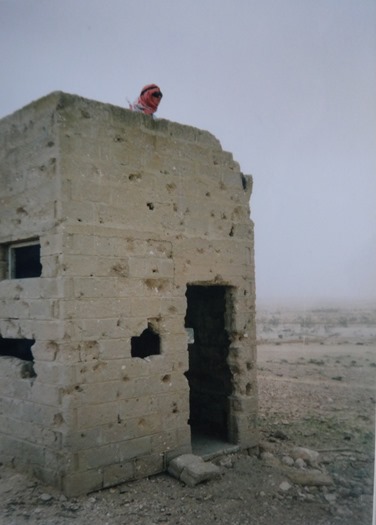
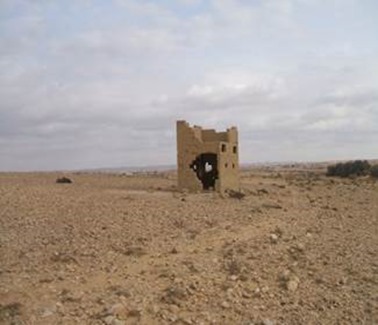 The watchtower in the desert, 1997 and 2009
The watchtower in the desert, 1997 and 2009
Whilst much had stayed the same at Revivim, much also had changed, small changes yet significant. In the dining room these days there is a man on a till who records all that you’ve taken. Gone are the days of true communal living when one took whatever one wanted and it was not written down; now all is measured in shekels even if these are not actually asked for at the point of sale and even if the prices are still greatly subsidised. One of the main reasons behind that change is, I am afraid to say, Sara who would take far in excess of what she and Yankalei needed and then give it her daughters in Eilat and Tel Aviv. One can look at such actions in three ways; one can see her as a mother simply wanting to provide for her children or as a thief, stealing from the other kibbutz members. I however, wonder about a third viewpoint, seeing her as a child who had everything stolen from her, who was moved from place to place, never knowing what the future might hold. Psychologists stress how crucial our formative years are on determining our adult character and so is it not natural that someone with that start in life would wish to grab what she could, to stockpile for an uncertain future and to make sure that her children do not have to go through the same?
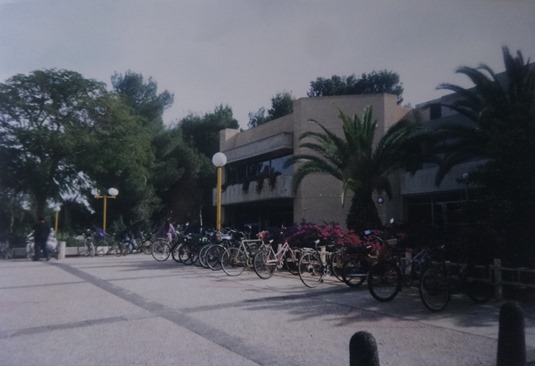 The central building which houses the dining room and moadon
The central building which houses the dining room and moadon
Changed too is the Shabbat disco, now a painting studio; the Ulpan classroom, now a volunteers’ common room and the supermarket which has been moved to where the dairy used to be. It is much bigger than it used to be as the kibbutzniks of the 21st century demand more choice than their predecessors. There are Thai and Russian sections to cater for the guest workers and new immigrants from the former USSR, but it is more costly these days as well. Finally, there is Revivim’s latest commercial development, a zoo just below the cactus garden. We took Tom there and he marvelled at the llamas, birds, camels and monkeys. Along with the Mitzpe Revivim Museum, this points the way to the kibbutz’s future in which desert tourism is seen as a major factor.
Next part: Living for the Moment
[1] Moadon, lit. club (Hebrew).
[2] I learnt backgammon on Revivim, taught by Yankalei (a mean player) on my very first night, my game developed in the moadon. It’s been a useful skill to have, particularly when working in prisons, although the pinnacle of my playing career came in 2002 when I beat the Lowlander in a best of 100 games competition to claim the Long March trophy. See ‘Across Asia with a Lowlander’ for details.
[3] The best being when we kidnapped two hens from the chicken farm and locked them into the toilet of the apartment of two of the girls. The place was not pleasant when they returned from work…
[4] There may be other reasons for that mind. In his psychological study on children who grew up communally on kibbutzim, ‘Children of the Dream, the psychologist Bruno Bettelstein looks at the fact that many kibbutz children have failed to find partners from their peers on the kibbutz. He attributes this to Westermarck effect—a form of reverse sexual imprinting that causes children raised together from an early age to reject each other as potential partners, even where they are not blood relatives. Consequently, according to Bettelstein, because they cannot find a spouse on the kibbutz, the adolescents look outside and end up leaving. Whatever the case may be, youngsters wanting to leave after attaining adulthood is a serious problem at Revivim, and both Yankalei’s daughters left after marrying men from outside the kibbutz.
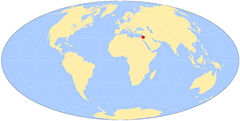
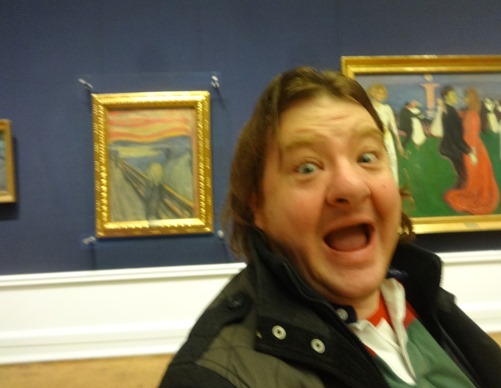

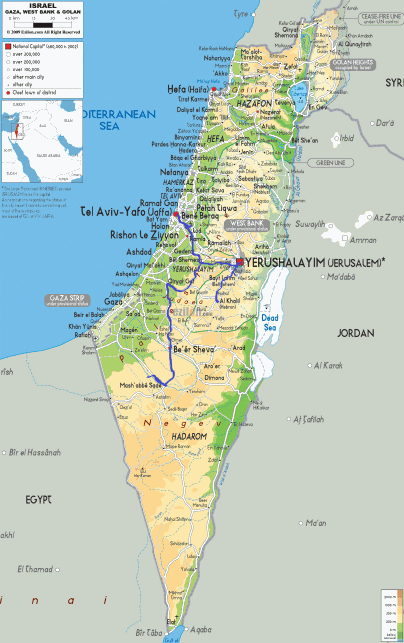
No comments:
Post a Comment